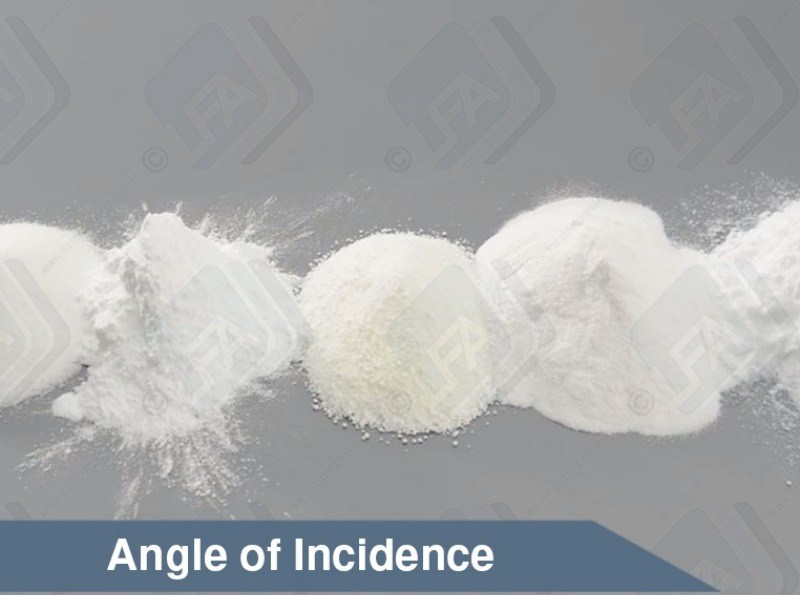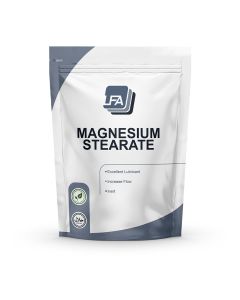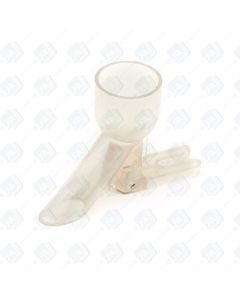Qu’est ce qui constitue exactement l’excipient idéal ? Celui qui aide à rendre l‘ingestion plus facile pour les consommateurs et qui est plus simple à fabriquer pour les producteurs. Pas seulement un excipient qu’il est admissible d'utiliser mais un qui s’étend au delà d’une fonctionnalité standard. La cellulose microcristalline est peut-être exactement l’agent liant que vous recherchez. Elle ne deviendra pas un gel comme la méthylcellulose and si comparée aux autres agents liants, elle semble fournir le degré optimal de friabilité tout en restant sensible au lubrifiant.
Avantages Principaux de la Cellulose Microcristalline
- Plus haute compressibilité
- Fluidité augmentée
- Liant plus puissant
- Sans odeur, sans goût
- Non réactif
- Faible absorption
La Cellulose Microcristalline, généralement nommée MCC, est produite dans un environnement contrôlé. Le résultat final est une poudre pure blanche sans aucun goût ou odeur, capable d’ajouter de la forme et dureté à vos comprimés. Le MCC maintient les avantages nécessaires d’un diluant. Elle est efficace en tant qu’agent gonflant dans votre comprimé ou gélule, donnant le poids désirable pour vos clients. La Cellulose Microcristalline a une densité gonflante minimale, augmentant les caractéristiques de fluidité. Une fluidité facile aide à assurer que chaque ingrédient soit uniformément réparti au sein de la mixture. Si le mélange est consistant, chaque comprimé aura la même quantité de chaque ingrédient au terme de la production, créant un produit de qualité.
Pourquoi choisir la Cellulose Microcristalline ?
La Cellulose Microcristalline fait réellement le travail et elle le fait bien. Elle fonctionne bien avec beaucoup d’autres excipients populaires et est une partie intégrale de nombreuses formules de fabricants. Les agents liants sont, sans aucun doute, un élément crucial du processus de fabrication de comprimés simplement parce qu’ils assurent une dureté au comprimé. De plus, la compressibilité affecte tous les aspects du produit final, par exemple, désintégration, dissolution et absorption. La MCC est directement compressible et par conséquent peut être compressée dans un comprimé sans avoir à broyer ou traiter un mélange, rendant le processus de fabrication globale plus efficace.
Compressibilité et capacité liante sont incontestablement deux caractéristiques de la Cellulose Microcristalline. Aucunes de ces caractéristiques dissuadent sa capacité à dissoudre avec aisance une fois sous forme de comprimé, un élément crucial de tout comprimé ou gélule. La MCC est sans danger à consommer en quantités normales, et largement utilisée comme un excipient pour la fabrication de comprimés. De plus, c’est une source naturelle de fibre alimentaire et est également sans calories. Par dessus tout, la MCC est inerte, c’est-à-dire qu’elle ne réagira pas ou n’interfèrera pas avec d’autres substances.
Le Point de Vue de LFA
Globalement, ce produit peut possiblement être ce que vous recherchez. Il est recherché puisqu’il est parmi les meilleurs diluants avec des qualités liantes remarquables et préservera également ces propriétés pour vous. Votre processus de formation sera plus facile grâce à cet ingrédient. Avec ces avantages et utilisations, la Cellulose Microcristalline est votre choix idéal pour un agent liant. L’utilisation de la MCC au côté d’autres excipients rend la production plus paisible et plus efficace.
Rédigez votre propre commentaire
Are all excipients safe for all ages to consume?
Yes, it does not matter what age, size or sex the person consuming the products is. It is, however, important to check the intolerance data.
Are all the excipients safe for human consumption?
Yes, all of the excipients are safe for human or animal consumption. There are some precautions that should be taken when handling them and there are some people that might have intolerances to some of them. Information on this can be found in the products MSDS and Intolerance Data Sheet. This can be found in this section for every excipient.
Are there any known allergens or health risks?
Sont votre Excipients naturels?
Oui, tous nos Excipients sont extraits de sources naturelles. Pour plus d'informations, veuillez visiter les pages produits.
Can I have a CoA for my Excipient?
Yes. CoA stands for Certificate of Analysis this is also known some times as an MSDS (Material Safety Data Sheet) all of the information contained in a CoA is inside the MSDS for every LFA product which is emailed to you after purchase.
Puis-je produire des comprimés sans Excipients?
Il est peu probable que vous serez en mesure de produire des comprimés sans l'aide des Excipients à tous. Certains produits ne se lient sans Excipients, mais alors ne pas s'écouler à travers la machine. Nous vous conseillons d'utiliser un
Dissolving rate? Any known factors that can affect the rate, speed up or slow down the breakdown of a tablet?
Yes. There are two things at play here. You can get hygroscopic and hydrophobic excipients. Hygroscopic means that they take on water quickly, while hydrophobic means that they repel water.
There are products know as supper disintegrants. These products help the breakdown of tablets. At the moment LFA does not sell any supper disintegrants.
Magnesium stearate is hydrophobic this means that it will slow the breakdown of a tablet.
However, it is used in such small amounts that most of the time it will not make a difference to our customer's products. If they would like to be sure then they should conduct what is known as a disintegration test.
How long is the storage period of each excipient? What is the shelf life?
Firmapress - 2 years form batch date.
Dextrose - 3 years from batch date.
Dicalcium Phosphate - 3 years from batch date.
Microcrystalline Cellulose -
Magnesium stearate -
Lactose - 2 years from batch date.
Silica Dioxide - 2 years from batch date.
How should I clean contact parts that have come into contact with my excipients or active ingredients?
here are 6 steps that should be followed as a general rule of thumb when cleaning contact surfaces that have come into contact with powders:
Dry Clean - First you need to remove as much of the dry powder as possible. You can do this using a hover/vacuum. Make sure that the vacuum you are using has a filter good enough to handle fine dust.
Wet Clean - Next you need to perform a wet clean. This can be done with warm water and soap or if available an ultrasonic cleaner.
Rinse - Next you need to rinse off any soap with potable water (drinking water). You do not have to do this if you used an ultrasonic cleaner in the last step. It is important to ensure that all parts are thoroughly dried immediately after washing to avoid any rusting.
Sanitise - Next you need to sanitise the surface. This step is recommended by the FDA. There are a number of sanitising solutions available designed to be applied and left on.
Lubricate - You now need to lubricate any parts that require it. This should be with the appropriate grade oil or grease considering your use and greasing chart. Store - Finally store any of the parts in a cool dry place. If you are storing them on the machine then make sure the machine is in a temperature controlled environment with low humidity.
Quelle est la différence entre la gamme des excipients?
Nous vous proposons de la Cellulose Microcristalline, Stéarate de Magnésium, le Phosphate Dicalcique et Firmapress dans notre gamme des excipients.
La Cellulose microcristalline est un agent de liaison, qui renferme le contenu de la tablette.
Le Phosphate dicalcique est un écoulement de l'agent et contribue à déplacer les ingrédients dans la machine avant qu'ils sont compressés.
Le Stéarate de magnésium est un lubrifiant sec et aide à nouveau avec le mouvement des ingrédients dans la machine, mais contribue également à l'éjection de la tablette de la machine. Veuillez noter que le Magnésium Sterate ne se lie pas par lui-même.
Firmapress est un tout en un mélange de Cellulose Microcristalline, Stéarate de Magnésium et Phosphate Dicalcique.
What is the mesh size of your excipients? etc.
Dextrose - approx 100 mesh
Dicalcium Phosphate - approx 100 mesh
Microcrystoline Cellulose - approx 120-200
Magnesium sterate -
Lactose - 80 mesh
Silica Dioxide -
Firmapress - 100-200 mesh
What kind of agent is each excipient?/ What is the main use of each excipient?
Dextrose - Sweetener, binding agent, good for chewable tablets or candy.
Microcrystalline Cellulose - Binder, filling agent. Good at binding tablets and making them bigger. It can also be used as a filler for capsules.
Magnesium stearate - Dry Lubricant. This stops products from getting stuck to the tooling. It can also help with powder flow issues and caking issues.
Lactose - Binder, sweetener and bulking agent. It has a large mesh so it flows well but most people do not like it because of the intolerance issues.
Silica Dioxide - Flowing agent. This assist powders in flowing smoothly through the machines. It also helps with cacking issues where powders get stuck to the machine.
What kind of condition should excipients be stored in?
Firmapress - 2 years form batch date.
Dextrose - 3 years from batch date.
Dicalcium Phosphate - 3 years from batch date.
Microcrystalline Cellulose -
Magnesium stearate -
Lactose - 2 years from batch date.
Silica Dioxide - 2 years from batch date.
Which excipient should I add if the product doesn't bind well?
If your product does not bind well then we would recommend using MCC. This can be used in any % the limiting factor is the size of the tablet.
If the amount of MCC you would have to use would be too much or if you do not want to use MCC then you have 3 other options: Ask your supplier for a directly compressible or tabletable grade of your product. Spray dry your product. Wet granulate your product.
Which excipient should I add if the product is sticky?
If your product is sticky then you will need to add a dry lubricant to your mix. For this, we recommend magnesium stearate.
We do not recommend that you add more than 1% to the mix as more than this can cause capping. If your product is still sticky at this point then we would recommend looking into granulation.
Which excipient should I add if the product/API is clumpy?
If your product or API is clumpy then you will need to add an anticaking agent. For this, we recommend silicon dioxide. We only recommend adding a maximum of 2% of this to the mix










